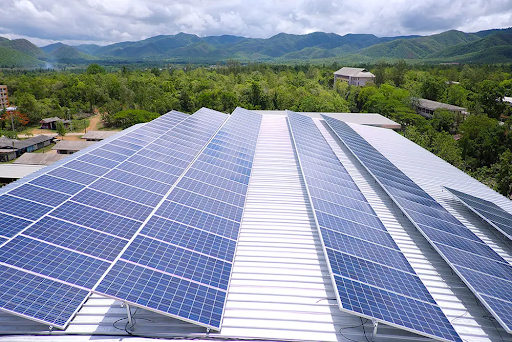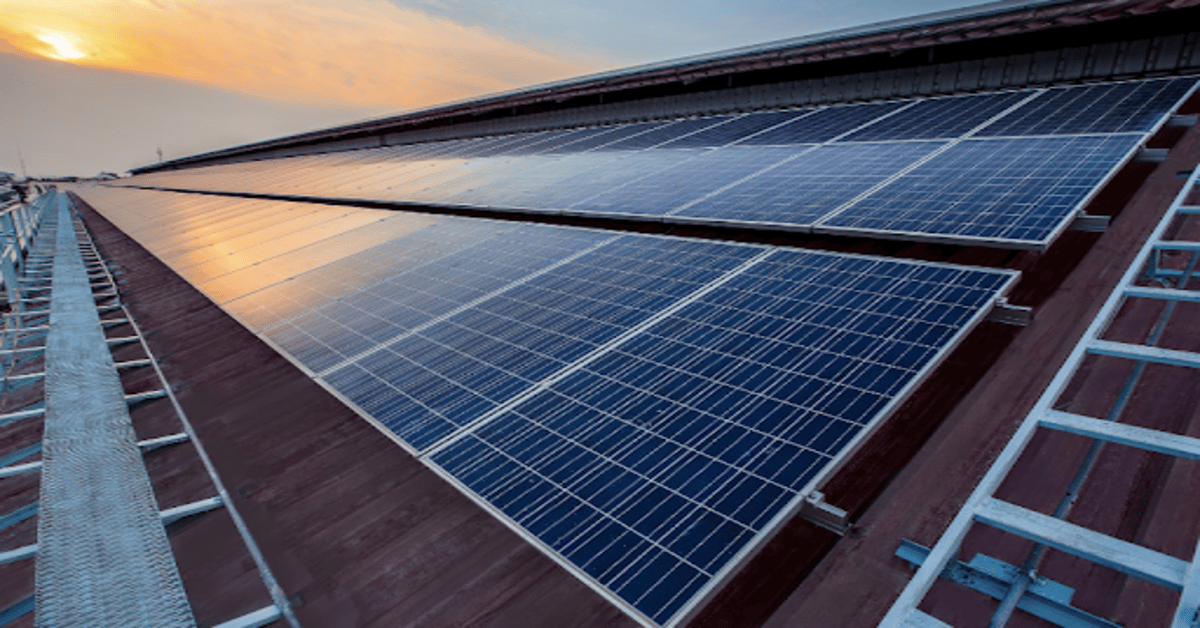India’s solar sector is undergoing rapid changes, driven by ambitious targets and a strong push towards localisation. Even as the country is hurrying to set up renewable capacity, its desire for the quality and reliability of solar products is never more pressing than it is now. ALMM compliance in solar projects in India is among the key policy measures the government has taken to address this desire.
The Ministry of New and Renewable Energy (MNRE) implemented the Approved List of Models and Manufacturers (ALMM) so that only registered manufacturers and solar modules are utilised in government-sponsored and grid-connected initiatives. While the move has enhanced the general quality standard, it has also introduced additional issues in the implementation of solar projects.
As of 2025, the MNRE has enlisted over 80 module manufacturers under ALMM List-I and announced that enforcement of ALMM List-II for solar cells will begin on June 1, 2026. This update aligns the compliance landscape with India’s goal of 500 GW non-fossil fuel capacity by 2030.
This article explains what ALMM compliance is, how solar developers will be affected, and what the solar industry can expect in the future, particularly in the context of solar projects in India.
What is ALMM Compliance?
ALMM is short for Approved List of Models and Manufacturers, a compulsory list issued by the MNRE validating approved solar PV module producers (List-I) and solar cell producers (List-II) authorized to supply for government schemes or for schemes availing government incentives like net metering or subsidies. It is now obligatory to ascertain ALMM compliance for solar schemes in India to be eligible under such schemes.
According to the ALMM mandate, any solar project that comes under these categories must procure its modules and, subsequently, its solar cells from ALMM registered suppliers. This policy does:
- Ensure quality assurance for solar cells and modules installed in India.
- Boost domestic production by curbing dependence on uncontrolled imports.
- Maintain traceability and accountability throughout component purchasing.
As of 2025, the MNRE has reiterated that List-II compliance will begin on June 1, 2026, allowing time for ramp-up in domestic manufacturing and capacity alignment.
The ALMM mechanism is the force behind the long-term sustainability of India’s solar infrastructure. However, implementation has been a mixed experience for developers and EPCs, particularly as the solar industry weighs the trade-off between enforcement of quality and speed of execution.
Which Entities and Products are Covered Under ALMM?
As of now, ALMM has two primary lists:
ALMM List-I: Module manufacturers certified by MNRE that meet its quality and performance standards.
ALMM List-II: Approved solar cell producers, enforcement begins April 2026 as ALMM standards evolve.
The applications of ALMM are:
- Government scheme-based grid-connected solar schemes.
- Projects that provide open access advantages.
- Projects providing net metering or other regulatory advantages.
Note: Projects that were bid out before April 10, 2021, are exempt from ALMM List-I compliance requirements.
Also, private, off-grid, or totally captive installations are not covered under the current ALMM norms but may be included in future revisions depending on the policy’s evolution.

Key Impacts of ALMM Compliance on Solar Project Implementation
While the Approved List of Models and Manufacturers (ALMM) policy aims to elevate the quality and reliability of solar modules in India, its enforcement has introduced significant challenges for project developers, EPC contractors, and investors. Understanding these impacts is essential for effective planning and risk mitigation.
- Procurement Delays Due to Limited ALMM-listed Vendors
The first and most obvious impact is in the procurement of solar modules. With an approved short-listed vendor list, project developers face delays in procurement, especially during peak procurement seasons.
- Vendor bottlenecks: Since different developers are competing for the same few approved manufacturers’ modules, lead times are longer.
- Logistics slowdowns: Since demand is concentrated on ALMM-listed suppliers, even shipping and delivery timetables are affected.
This creates challenges in overall project planning and may result in delays during site execution, especially when combined with other constraints like land readiness and availability of labor.
For example, in early 2024, several projects in Rajasthan and Gujarat reported 3–5 week delays solely due to unavailable modules from approved ALMM vendors.
This bottleneck has created solar project delays, especially for large-scale and time-sensitive installations.
- Cost Inflation from Constrained Supply and Removal of Cheap Imports
Earlier, most Indian solar developers utilised competitively priced imports, notably from China and Southeast Asia. But ALMM prohibits the same by making it mandatory to utilise locally approved models.
- Reduced pricing flexibility: Developers can no longer shop globally for price advantages.
- High prices for components: The lack of competition among listed suppliers results in higher module prices, sometimes by as much as 10–15%.
- Overruns in the budget: This budget increase imposes a burden on the lean project margins.
These factors make it difficult to finance and bid, particularly for utility-scale solar plants.
- Timeline Disruptions due to Planning Around Delivery Schedules and Documentation
With cost and procurement uncertainties, the challenge of keeping project timings is introduced. ALMM compliance has resulted in:
- Recharting the Gantt chart to accommodate module delivery timetables.
- Last-minute re-sourcing, if a supplier fails to deliver or falls off the list.
- Regulatory approvals are delayed due to compliance documentation needs.
For EPC players, that means incorporating tighter buffers into planning cycles and establishing closer relationships with ALMM-listed suppliers in a manner that facilitates smooth execution.
Are There Any Benefits to ALMM Compliance?
Yes, and they are significant.
Though the short-term dislocations are genuine, long-term advantages for ALMM compliance for solar projects in India cannot be neglected.
- Enhanced Quality Control
ALMM guarantees that mission-critical solar equipment comprises only well-tested and certified devices. This results in:
- Lower likelihood of early module failure.
- Better energy yields predictability.
- Extended asset life and reduced O&M issues.
- Reduce Project Failure Risk
By removing poor-quality products from the system, ALMM compliance ensures the integrity of solar assets throughout their 25+ year lifecycle. For investors and developers alike, it enhances confidence in the bankability of projects.
- Domestic Capacity Building
The Approved List of Models and Manufacturers (ALMM) policy continues to play a pivotal role in advancing India’s Aatmanirbhar Bharat initiative. By mandating the use of domestically approved vendors, List-I for modules and List-II for solar cells, the ALMM framework has significantly boosted self-reliance in the solar supply chain and stimulated large-scale investments in local manufacturing.
As of March 2025, India’s solar module manufacturing capacity has reached 74 GW, according to official data. During the same period, solar cell manufacturing capacity tripled to 25 GW, driven by targeted policy support and Production Linked Incentive (PLI) schemes. While this growth is helping meet domestic ALMM requirements, India’s solar manufacturers are still working toward achieving globally competitive scale and quality for export markets.
The policy has also become a catalyst for technological innovation and improved quality standards among Indian firms. As more manufacturers meet compliance standards and are added to the approved lists, increased competition is expected to bring pricing stability, helping developers achieve the right balance between quality, cost, and performance.
Policy Impact and Industry Response
The industry is managing the new regulatory environment. To better handle the ALMM process:
- Developers have to start supplier involvement sooner in the project timeline.
- They must take into account lead times and potential adjustments to the ALMM list.
- Collaborating with experienced EPC partners who have specialisation in the ALMM impact on solar project execution is imperative.
To ease implementation, MNRE has also launched an online portal for faster processing of ALMM applications and introduced a streamlined audit mechanism to speed up the inclusion of qualified vendors.
At Hartek, we streamline solar EPC execution by proactively guiding customers through regulatory requirements, helping them avoid delays and stay on schedule without compromising timelines.
For the solar sector to achieve its ambitious targets, the government also needs to keep refining and expanding the ALMM structure, include more local manufacturers in it, further open it up, and simplify the implementation processes.
Conclusion
The ALMM compliance solar projects India narrative is reflective of a larger trend of quality, localisation, and long-term sustainability in the solar industry. While it does create short-term procurement and planning challenges, it does create a good foundation for future growth.
As India aims to reach 280 GW of solar capacity by 2030, policies like ALMM play a crucial role in building a resilient and self-sufficient renewable energy ecosystem.
As India aims to lead the transition to clean energy, innovations like ALMM must focus on building a strong, secure solar ecosystem. By aligning the right policy and planning along with on-the-ground implementation, such challenges can be turned into opportunities.
Regardless of your role as an investor, developer, or EPC contractor, embracing ALMM today is paving the way for a safer solar future. With the support of experienced partners like Hartek, ALMM compliance becomes not just manageable but a strategic advantage in India’s clean energy journey.
FAQs:-
1. What is ALMM compliance in solar projects in India?
ALMM compliance refers to the use of MNRE-approved solar modules and cells in projects to ensure quality and support India’s solar infrastructure.
2. How does ALMM compliance impact solar project execution?
ALMM compliance affects procurement, costs, and timelines, as developers must source from approved manufacturers, causing occasional delays.
3. Are all solar projects in India required to follow ALMM compliance?
Only government-linked and net-metered projects must follow ALMM. Private and off-grid systems are currently exempt.
4. What are the benefits of ALMM compliance for solar developers?
ALMM ensures better module quality, long-term reliability, and reduced O&M costs, boosting investor confidence and project bankability.
5. How does Hartek support ALMM compliance in solar projects?
Hartek assists developers by streamlining ALMM regulatory processes, ensuring timely procurement, and minimizing execution delays.

